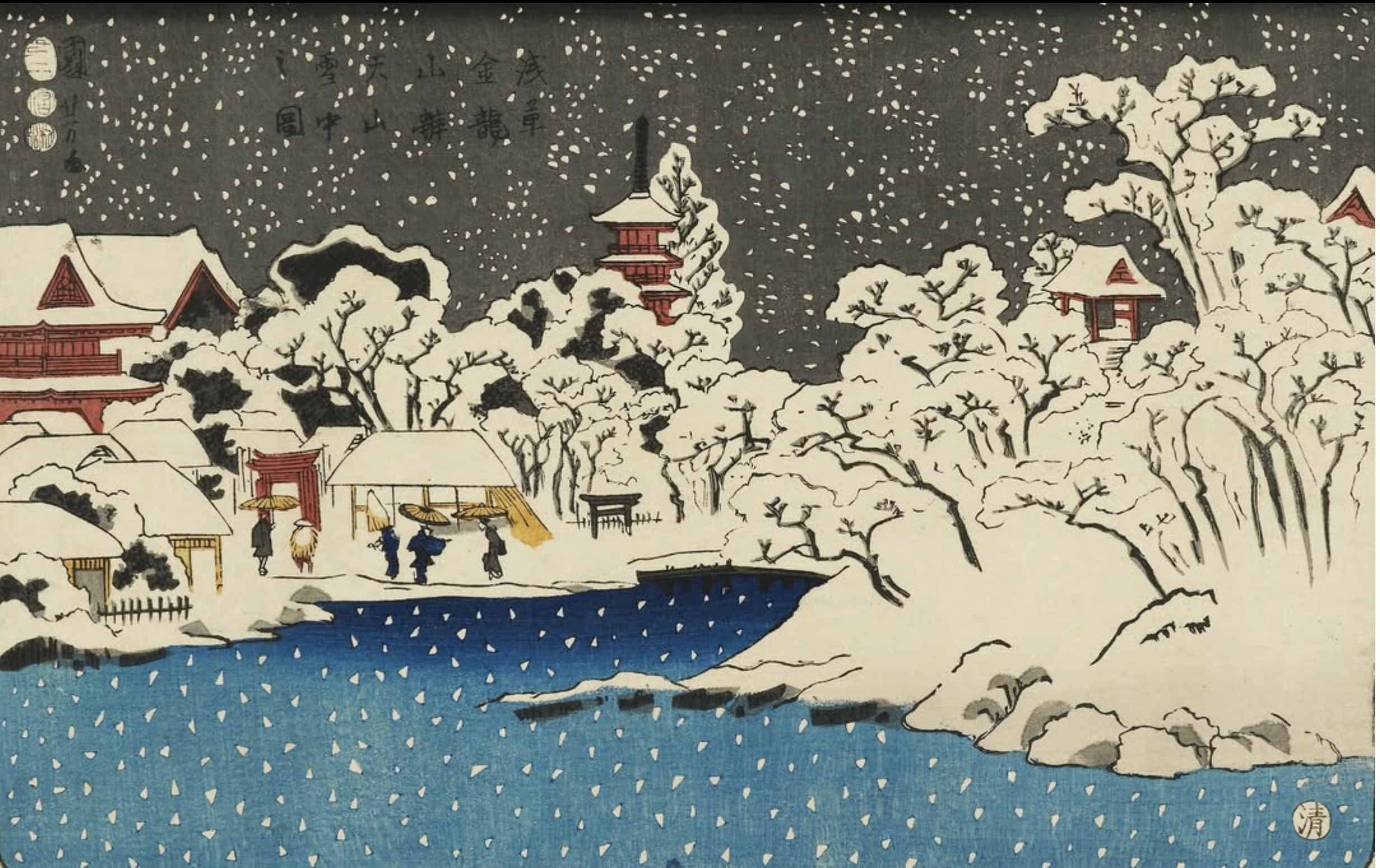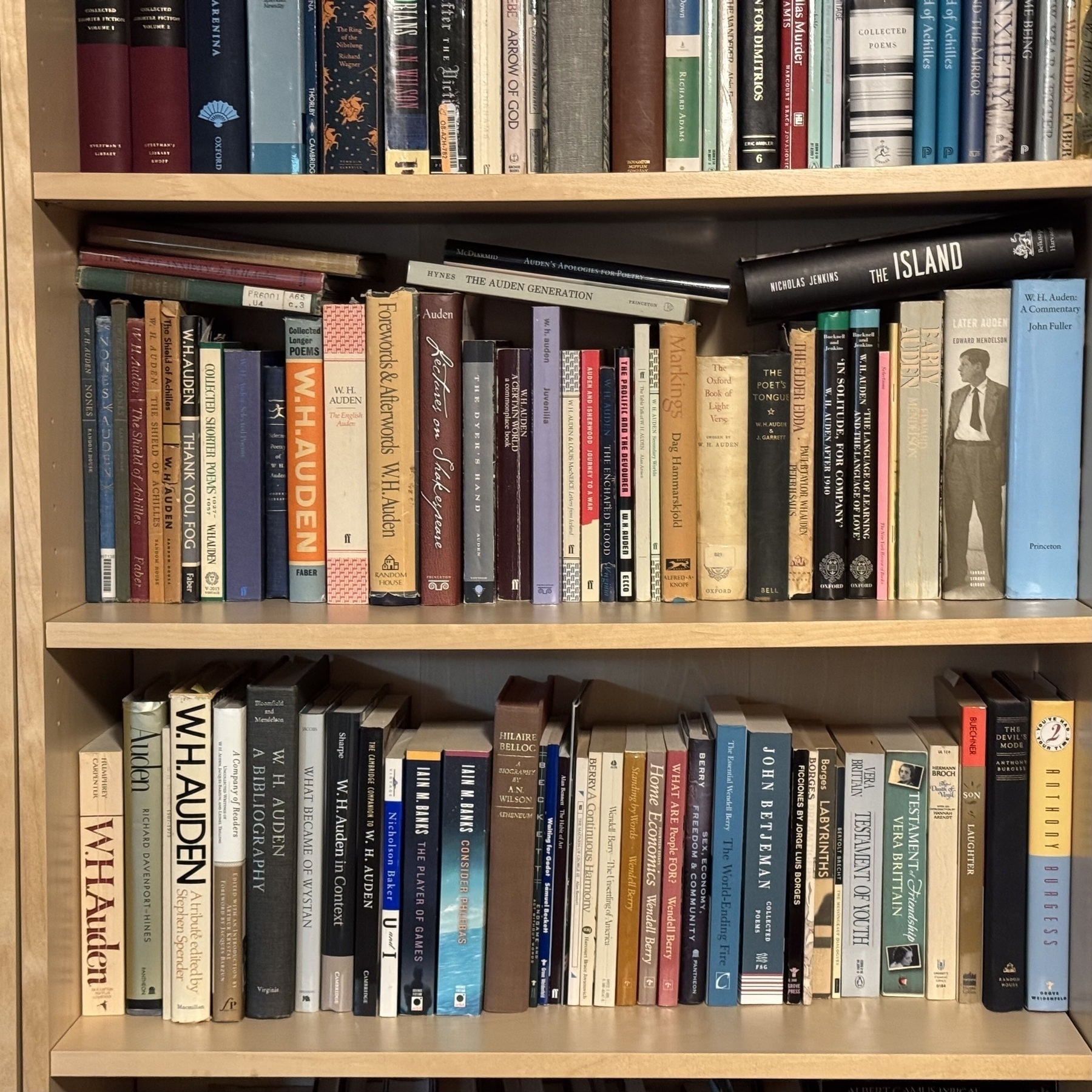Dennis Overbye is retiring, which mens he has to give up his business card that identifies him as the New York Times Cosmic Affairs Correspondent.
⛩️ View of snow at Benten HIll, Kinryūzan Temple, Asakusa, 1853, by Utagawa Kuniyoshi (1797–1861). Woodblock print. From the Ashmolean’s Advent Calendar. Not very Adventish, but very cool.

Another Clare Barry piece, this one a stylized image of Oxford’s lovely Botanic Garden.

Clare Barry has designed postage stamps for a certain imaginary country.

Every night I unplug my Precious Moments-style nativity scene, and every morning I re-inflate it. As it rises up again, often Mary’s headscarf — which is meant to drape over her shoulders and hang down to her waist — gets out of position, sometimes covering her face. I surprise myself by the tenderness with which I set it in its right place, smoothing it down, revealing once more her smiling praying face. But it’s the least I can do for her, considering what she has done for me.
The Chicago Tribune has named my staggeringly talented friend and former colleague Shawn Okpebholo Chicagoan of the year in classical music.
Either Adam Roberts and I happened to be writing about The Mill on the Floss at the same time or he is surreptitiously arguing with me.
I’m continuing my meditations on family with a post on The Mill on the Floss.
Umberto Eco (1999):
But what I really want to talk about is beans, and not just beans but also peas and lentils. All these fruits of the earth are rich in vegetable proteins, as anyone who goes on a low-meat diet knows, for the nutritionist will be sure to insist that a nice dish of lentils or split peas has the nutritional value of a thick, juicy steak. Now the poor, in those remote Middle Ages, did not eat meat, unless they managed to raise a few chickens or engaged in poaching (the game of the forest was the property of the lords). And as I mentioned earlier, this poor diet begat a population that was ill nourished, thin, sickly, short and incapable of tending the fields. So when, in the 10th century, the cultivation of legumes began to spread, it had a profound effect on Europe. Working people were able to eat more protein; as a result, they became more robust, lived longer, created more children and repopulated a continent.
We believe that the inventions and the discoveries that have changed our lives depend on complex machines. But the fact is, we are still here — I mean we Europeans, but also those descendants of the Pilgrim Fathers and the Spanish conquistadors – because of beans. Without beans, the European population would not have doubled within a few centuries, today we would not number in the hundreds of millions and some of us, including even readers of this article, would not exist.
Fun to come across these, from back in the heyday of the Oxford American — also when I wrote for the mag. (Perhaps unrelated facts. You be the judge.) These samplers — included in each year’s Music Issue — introduced me to so many musicians I’m still listening to today.

Autumn finally makes an appearance in central Texas.

Mozi is probably an excellent app for people who say things like “Great to see that you’ll be in Davos too — and we just connected in Aspen!”
See the false gods fall over on their backsides when confronted by the GLORY of the ANGEL of the LORD!

Schools for Philosopher-Carpenters, by Alex Sosler:
The modern economy was built on the work of hands: agriculture, industry, manufacturing. We’ve shifted toward a head economy: accounting, management, information technology. We now have a choice: either become even more technological and technocratic, or find ways to return to a more human-centered, head-heart-and-hands economy. A robot can say, “Welcome home.” But it takes a whole and humane education to form people whose hearts and hands know how to truly make a home and extend a welcome.
I hate pushing books to the back of bookshelves — I like them lined up neatly along the front edge of the shelf. But now I am forced to push them back. Why? It’s Elon Musk’s fault. The SpaceX Rocket Development and Test Facility is in McGregor, fifteen miles away, and sometimes when they’re testing everything in the house rattles. (Locally this is called “SpaceX Thunder.") I have become genuinely afraid that my bookcases will topple and crush me, as happens to Leonard Bast in Howard’s End. So I’ve adjusted their weight distrubution in the cause of safety. Damn you, Elon!

I’ve had it with the Santafication of my neighborhood, this arrant Clausism. I stake my claim: not Santafication but JUSTIFICATION by faith in the one who was born long ago in Bethlehem! Hier stehe ich; Ich kann nicht anders.


